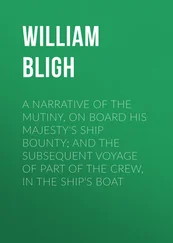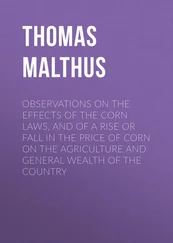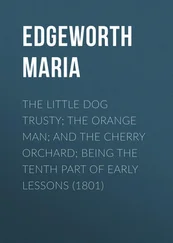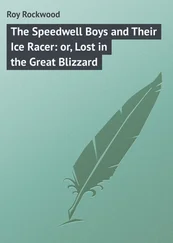Giants, or Gants, that is, Huns-Hans, who also came from the Phlegrean fields, in myths they were described as opponents of the Olympic gods, and the Phlegrian fields are called their homeland.
In Chinese sources (Bei Shi and others), the state (and, accordingly, the people) of Yada is noted, attributed to the Xiyu region. Chinese historians found it difficult to indicate their origin; it was assumed that they were descendants of Yuezhi or Gaoju. They lived west of Khotan and south of the Altai spurs. The capital is the city of Badiyan, only 10 li in a circle. There is a palace and Buddhist stupas and pagodas adorned with gold. And in these sources the Hephthalite and Sarmatian Huns are called so. I.e. the Chinese call their land ADOM.
This geographical reference to this area is due to the myths and legends about Ganesh, Skanda, Indrik-beast. No one can argue that this is the closest place to the European part of the continent, where the remains of mammoths are massively found, and one of the most famous is Yamal, and the most famous find is the Yamal mammoth Masha. Often in the works of oral folklore, the “homeland” of the Indrik-beast is called – the Indian land full of wonders – India, which is not accidental, but there were several Indies in the history of migration of Indo-Europeans, and one was later described by Herodotus in the Caucasus as Sindika, an area in the Kuban region…
Here, as you can see, Tarja-reka is also mentioned, as the place of the ancestral home of the Indo-Europeans, which remained with the Hellenes in the form of Tartarus, as one of the places the land of ancestors.. Researchers have established an undoubted connection between the Indrik beast and the Vedic and Hindu deities Indra, and his weapon is the vajra and the vahana (carrier) is the elephant Aivarat, which also brings him closer to Ganesha (at birth Vinayak, then acquired the name Ganesha, Ganapati, Ganapati means the leader of the divine army of Shiva – ganas). Phlegrian fields also resemble Yamal and the Ob basin, where gas emissions are frequent and lead to explosions and burning of the soil. This can also explain the “milk rivers” and “jelly” banks. When condensation gets into the water. water becomes muna and resembles milk, and oil, mixing with the earth, turns it into jelly. And the slightest carelessness leads to inflammation, and here truly the hellish place is obtained. The climate here, to put it mildly, is not hot, that is, corresponds to the description of Hel of Scandinavia and Hell and Tartarus of Greece, damp, humid and cold, but the earth burns underfoot, and the water of the rivers is often poisonous from oil and gas, like the Styx of Hellas.
That is, the migration of Indo-Aryans from the coast of the Arctic Ocean is proved by the toponymy of places, the location of mammoth burial grounds in that region, and the emergence of myths about Ganesha, Apollo and Indrik-Zver, in the regions of the Ob river basin, and the present Arkhangelsk, Vologda regions and the Komi Republic, and Khanty-Mansiysk district, where there are cases of findings of mammoth remains. An additional argument in favor of the migration of Indo-Aryans from the Ob is the “Guestrovskaya Ode”, a poem published in Germany, the principality of Mecklenburg for the wedding, written by an unknown author specifically for the wedding in 1716 of Karl Leopold of Mecklenburg and Ekaterina Ioannovna, niece of Emperor Peter I, daughter of Tsar Ivan V Aleksey Tsarina Praskovya Feodorovna Saltykova, the elder sister of Empress Anna Ivanovna. This work describes the migration of the emboldened tribe from the Ob River to present-day Germany. Also, numerous finds of the most valuable artifacts in the Yamal region and the mouth of the Ob river, as well as in the area of the river. Kama of a later time, the so-called “Zakamsky silver”, which most likely were offerings from Iran, Byzantium to the sanctuaries of the Far North, described by Herodotus, who considers these places to be associated with the veneration of Apollo, and Herodotus gives evidence of Aristeus, who visited the Far North in execution vows. That is, the tradition, memories of the ancestral home, already at a later time turned out to be so strong that offerings to the gods to the ancestral home of the Indo-Europeans were sent from Iran and Greece, for which there is material evidence, these are the treasures of Yamal (as well as burials and numerous finds of people of the European type) and Zakamsk treasures. And probably, this area can be identified with Hyperborea of Ancient Greece, as the place of origin of a number of Indo-Aryan peoples.
Nobody can argue that this is the closest place to the European part of the continent, where the remains of mammoths are massively found, and one of the most famous is Yamal, and the most famous find is the Yamal mammoth Masha [Tikhonov A. N., Brave V. M. Mamontenok from Yamal // Nature. – 1989. – No. 6. – P. 46—47.]
So. What kind of Indrik is this beast, and what evidence of him remains? In the Russian apocrypha, especially in the numerous versions of The Spiritual Verse on the Pigeon Book, the name of this beast appears in different forms: Indrok, Indra, Kondryk, Beloyandrik, Vyndrik, Unicorn, Unicorn and Unicorn. The name variations can be summarized in two:
Indrik and the Unicorn (the name White is also important):
The beast is a mother to all beasts…
And he dug the earth with his mother’s horn,
Dug up the keys all deep I took out all the boiling water.
This animal lives across the ocean-sea,
And he walks here in the dungeon…
It passes all the white stone mountains,
Cleans streams and depressions,
It misses rivers, cold stores…
“Pigeon Book”
In different lists of the Pigeon Book verse there are different features in the image of Indrik, but in all he is called “the father of all beasts.” He walks through the underground, “misses rivers and wells, or lives on Tabor-mountain (that is, the Mountain of Light,”; “when he turns, all the animals worship him.” Or he lives on the Holy Mountain, eats and drinks from the Blue Sea, does not hurt anyone. Or he walks with a horn through the dungeon, like “the sun through the skies.” “The Dove Book” is a collection of East Slavic folk spiritual verses of the late 15th – early 16th centuries, the questions and answers of which provide information about the origin of the world. The book united both Christian and pagan motives. The book was preserved thanks to the tragedy of the schism in Orthodoxy, and was preserved among the Old Believers. According to Russian folklore, Indrik is endowed with the features of the master of the water element, springs and wells, and acts as an enemy of the snake.
Indrik, as the master of the water element, is close to the mythical bird Sirin – the symbol of water and fertility. Images of Indrik are often combined with “braid”, which in ancient times meant water. Often in the works of oral folklore, the “homeland” of the Indrik-beast is called – the Indian land full of wonders – India, which is not accidental, but there were several Indies in the history of migration of Indo-Europeans, and one was later described by Herodotus in the Caucasus as Sindika, an area in the Kuban region…
“And somewhere else, you can hear a foolish live,
Yes, stupid to live, unreasonable?
And where, you can hear, is the Indian land,
Indian land, all rich?
As there is a lot of gold and silver,
Yes, more than that kind pearls.
In the Indian land, the steppe is wild,
The steppe is wild, the forests are dark.
Indrik the beast lives in those forests:
He has all pearl little shorts on him,
And the mane-tail is gilded,
And his hooves are all damask,
Fire blazes from his nostrils,
A column of smoke comes from his ears.
He runs to drink in the Tarja River,
He runs, he runs – the whole earth trembles.”
Читать дальше












